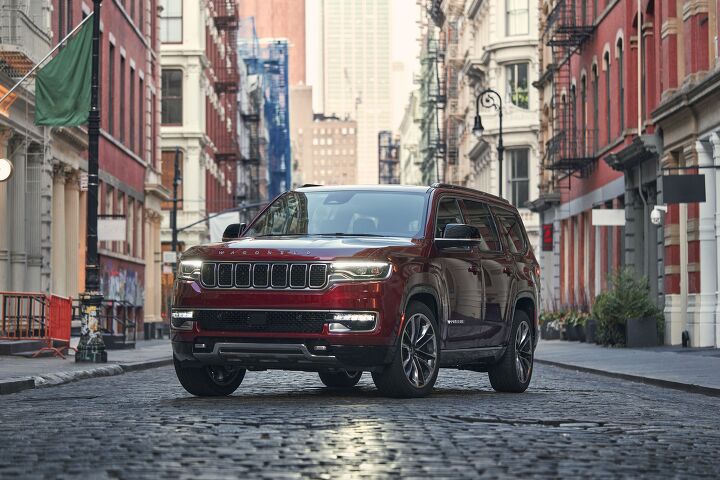Why Isn't the Jeep Wagoneer Selling More?

Sales Decline of the Jeep Wagoneer: A Closer Look
The Jeep Wagoneer has seen a significant drop in sales this year, raising questions about its performance in the full-sized SUV market. While it might seem like a broader issue affecting all large SUVs, the data tells a different story. The decline appears to be specific to certain models, with the Wagoneer and Grand Wagoneer experiencing sharp drops in sales compared to previous years.
Sales Performance and Market Comparison
According to recent data, Jeep sold 13,616 Wagoneers in the first half of 2025, a decrease of 54% from the 29,843 units sold in the same period in 2024. The Grand Wagoneer saw an even steeper decline, with a 58% drop. This is particularly concerning when considering that other full-size SUVs, such as the Chevrolet Tahoe, GMC Yukon, and Lincoln Navigator, are performing well in the market. For instance, the Lincoln Navigator has seen a 74% increase in sales, while the Cadillac Escalade and GMC Yukon have also shown strong growth.
This contrast highlights that the problem may not be with the overall demand for full-size SUVs, but rather with specific models and their positioning in the market. The Jeep Wagoneer's struggles stand out against the success of its competitors, suggesting that factors beyond general market trends may be at play.
The Role of Pricing and Features
One potential factor influencing the Wagoneer’s performance is pricing. The base model of the Wagoneer starts around $62,000, with the Grand Wagoneer priced at approximately $72,000. These prices are competitive with luxury brands like Cadillac and Lincoln, which often come with higher price tags. However, the perception of value can be influenced by features and design.
In terms of interior design, the Wagoneer offers a balanced approach between technology and traditional controls. Unlike some competitors, which are heavily focused on digital screens, the Wagoneer provides a more conventional layout. This could appeal to buyers who prefer a mix of physical controls and modern technology.
Powertrain Options and Consumer Preferences
Another key factor in the Wagoneer’s performance is its powertrain options. Jeep replaced the popular 5.7-liter and 6.4-liter V8 engines with a turbocharged 3.0-liter inline-six last year. While this change brings benefits like improved fuel efficiency and performance, it may not resonate with all consumers. Many buyers still favor the reliability and power of V8 engines, especially for towing or long-term ownership.
In contrast, Ford continues to offer V8 engines in its full-size SUVs, which could contribute to their stronger sales figures. General Motors also provides V8 options, which may be a deciding factor for customers looking for traditional engine performance.
The Impact of Electric Vehicles
Despite these challenges, there is some positive news for Jeep. The new Wagoneer S, an electric vehicle, has seen modest success, selling around 6,200 units this year. This model competes more directly with midsize SUVs and has helped offset some of the losses in the Grand Wagoneer segment. However, the overall brand still lags behind its competitors by about 14,000 sales compared to the previous year.
Conclusion
The Jeep Wagoneer’s sales decline raises important questions about its position in the market. While factors like pricing, design, and powertrain choices play a role, it seems that consumer preferences and competition are also significant contributors. As the automotive landscape continues to evolve, it will be interesting to see how Jeep adapts to meet the changing demands of buyers.
Post a Comment for "Why Isn't the Jeep Wagoneer Selling More?"
Post a Comment